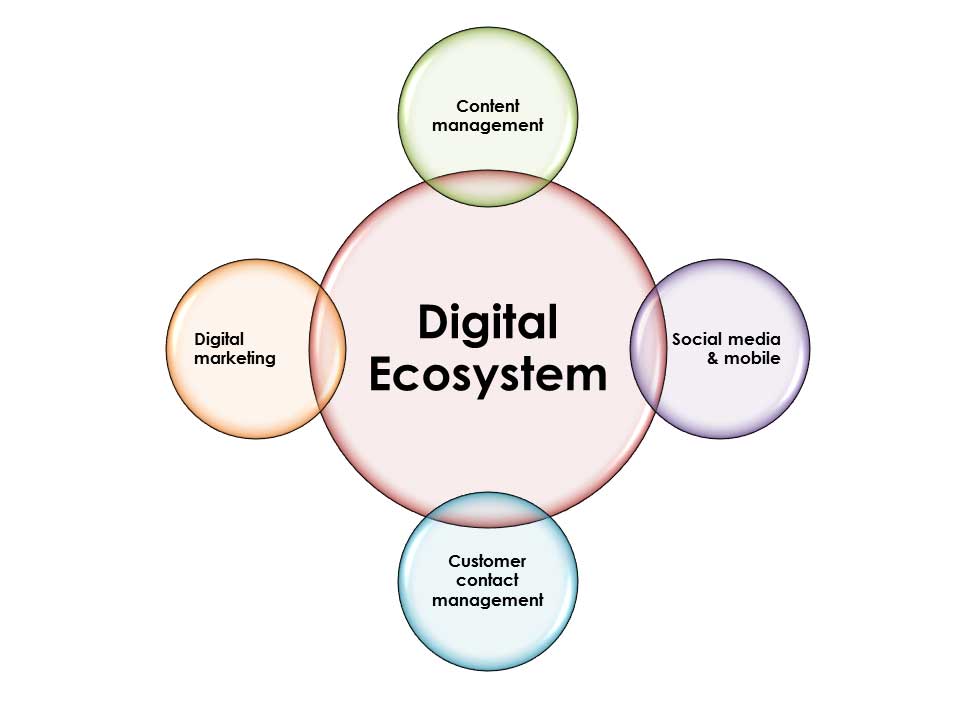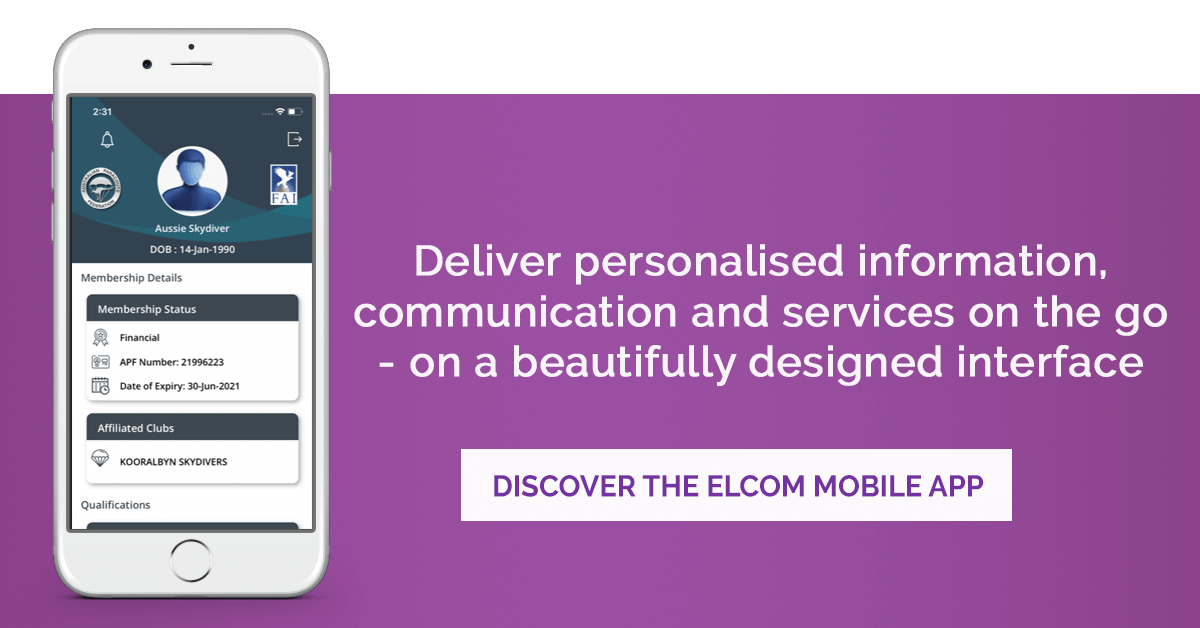This blog is the final in a series of four. The author, Kate Carruthers, is Head of Data Governance and Business Intelligence at UNSW. She has deep experience in enterprise digital and social media and has delivered solutions across the public and private sectors.

For businesses that want to use online and mobile to drive customer engagement it is important to understand the tools and techniques that can help. Business is all about people – your customers, your staff, and your stakeholders. Successful businesses are not merely transactional, they are relational – and the real challenge now is to adapt traditional business practices to the digital age.
Building your digital ecosystem
It is always important to maintain your own platform as the hub of your digital ecosystem. On social media platforms, for example Facebook or Meetup, you do not have control over the platform or its business rules and often you do not own your customer data. In both of those examples it is not possible to export a list of your customer contacts and reuse them outside of the platform. That is why maintaining your own website and content management system as the central hub of you organisation’s digital ecosystem is important.
There are four things you need to consider as you plan and manage your digital ecosystem:
- Content management
- Customer contact management
- Social media management
- Digital marketing
Content management and your digital ecosystem
A good content management platform is critical to the success of your digital ecosystem, and to driving online and mobile customer engagement. Since content is the key driving force for marketing strategies nowadays it is important to manage content effectively.
Whichever solution you choose for content management there are some important features that are key:
- Ease of use – it needs to be easy for a business person to create and manage content without the assistance of a technical resource
- Cost – it needs to provide value for money and a sustainable total cost of ownership (free solutions that don’t have good support might not work out so cheap in the long run)
- Security – the solution needs to provide good out of the box security with good online security patching support available
- Ongoing support and maintenance – the solution needs to have support available and it needs to have an ongoing enhancement program so as to keep up with changes in technology and digital marketing
- Social media and marketing integration – it needs to integrate with your social media and digital marketing tools. You do not want business people duplicating work between these systems.
- Support – the solution needs to have support and maintenance available (preferably in the same time zone as you)
Customer contacts in the digital ecosystem
Customers are the heart of any business and it is imperative to ensure that you can develop and maintain a customer contact list. These days there are plenty of cost-effective hosted solutions to help in managing customer relationships.
It is particularly important to use your social media activity to drive customers to provide their contact information into your own digital ecosystem. It is no use having customer data locked up in a proprietary social media platform. It is also difficult to reuse the customer information across platforms unless you have the customer data within your control and hosted within your digital ecosystem.
Software-as-a service (SaaS) customer contact and relationship management is making all of this much easier and cheaper for business. No longer is it necessary to invest in an expensive and cumbersome on premise CRM solution, instead businesses can adopt a SaaS CRM to better manage their customer data across online, social media, and mobile platforms.
The importance of people
The most important thing to setup to effectively support customer engagement via online and mobile channels is people. All the tools in the world will not help your customers if there is no well-trained person behind them. Getting your team educated about use of social media and related platforms is critical. Once this is in place then you can consider the tools to help your team to work effectively via online channels.
People need content
The digital world is driven by content and this means that to participate as a digital business you need to be generating digital content that is:
- Relevant
- Meaningful
- Timely
- Reusable
- Compelling
Content must be findable
Content must form part of a broad digital ecosystem for your organisation. Also, to ensure a good return on investment, the content that is generated must be capable of repurposing across multiple online platforms. Consideration also needs to be given to issues such as search engine optimisation (SEO).
For content to be findable by your target audience this means that the content needs to be created with the audience and SEO in mind.
You can even choose a CMS that helps to improve SEO by offering a range of SEO tools and functionality such as user-friendly URLs, meta tags and mobile responsiveness.
Tools to support people
Every week we see another social media fail, where a brand representative posts inappropriate material via their organisation’s account, like the recent inappropriate tweet during the NRL grand final. Typically this type of event is due to team members not being provided with the right tools to assist them in their online and social media work. In the @NSWRL account example, the people looking after this account were using the Twitter web client or the Twitter for iPhone app. It can be very easy to inadvertently tweet from a personal rather than a business account on these.
Social Media Management
The first and most important objective for business to better manage social media is to get team members off the native applications for each social media platform and onto a company-approved tool. For most organisations it is important to find a tool that balances cost-effectiveness, auditability, ease of use, and the ability to manage social media publishing across multiple social media platforms. There are plenty of other alternatives to consider and here is a good overview of alternatives, Hootsuite Competitors: 9 Other Social Media Management Alternatives to Consider. The key features to look out for in a social media management tool include:
- Team management - ability to manage a team of people to post on multiple social media platforms; ability to assign tasks to team members
- Audit trail – who posted what, and when
- Scheduling – ability to schedule posts to multiple social media platforms
- Analytics – ability to track and monitor engagement, conversations, and click throughs
- Security – ability to set and manage permissions for individual team members; secure mobile and web connections; ability to give social media access to team without giving them direct access to the actual social media account passwords; ability to comply with industry standards (e.g. for banking or medical industries)
Digital Marketing
The thing that enables the content, customers, social and mobile media, and your digital ecosystem to work for your business is your digital marketing. This is a combination of the process, technology, and people who drive out messaging via the various media to tell the story for your brand and products. A common way to approach digital marketing is to think about paid, earned and owned media.
Some of the key elements of digital marketing to consider include:
- Metrics, monitoring, measurement, and evaluation of marketing effectiveness
- How to leverage owned media, including website, mobile, and email
- How to develop an email strategy to drive customer acquisition and manage effective communication
- How to leverage earned media, such as social media
- How to integrate paid media with owned and earned media
- SEO and search engine marketing; how to leverage for web and mobile
- Planning campaigns for awareness and branding, acquisition, and retention
Conclusion
Adapting your business to effectively use online and mobile to drive customer engagement it is critical to understand the tools and techniques that can help. Good businesses are not merely transactional, they cultivate relationships. Businesses that succeed in the digital age will be those that can leverage their digital ecosystem to build relationships and drive revenue through social, mobile and online channels.
